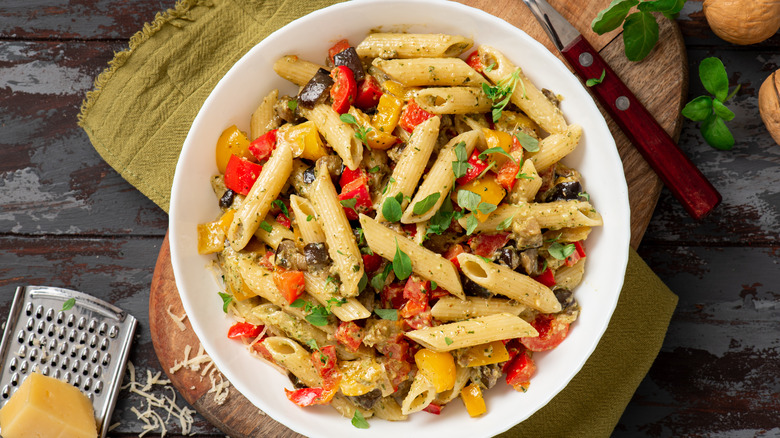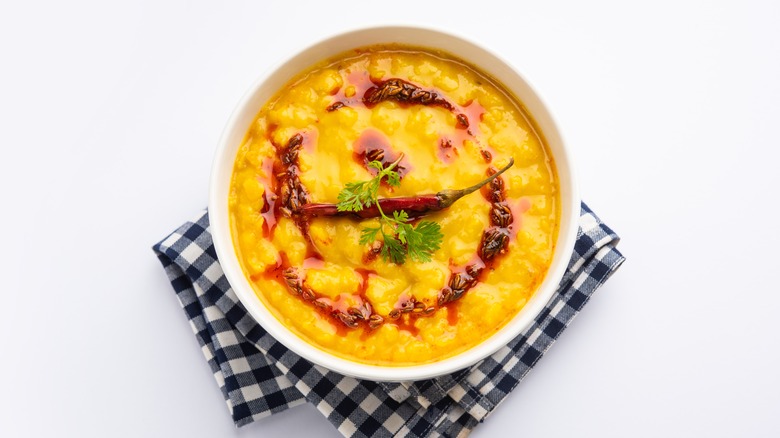Use This Classic Indian Cooking Technique To Elevate Your Pasta Salad
Sure, burgers — be they beef, veggie, turkey, or Impossible — are great when they're fresh off the grill. Hot dogs that have been charred a little go great with some mustard on a bun in the backyard. And, chicken — properly seasoned and not dried out, mind you — is a welcome addition to your barbecue plate.
However, are you giving enough attention and creativity to the side dishes? Is your potato salad plain? Are your baby-back ribs sitting beside a heap of runny coleslaw? How poor is your potluck without pasta salad?
Speaking of pasta salad, is there a side item that can vacillate so widely between good and bad variations? At its most basic, what could go wrong with filling pasta, flavorful dressing, crunchy vegetables, and maybe some rich meat and cheese? Unfortunately, most of us know the answer; mushy farfalle, too-little or insipid dressing, poorly-cut vegetables, chunks of cheese, or cubes of meat. The list could go on.
If pasta salad is your go-to bring-along dish and you want to avoid the pitfalls of a milquetoast pasta salad consider kicking things up a notch with a time-tested, flavorful technique from the Indian culinary pantheon. This delicious mixture goes by many names. Some call it tarka, but it is also known as tadka, chaunk, chhonk, and baghaar, reports Serious Eats. To keep things straight, we'll refer to it as tarka.
What is a tarka?
Tarka describes a technique for tempering or "blooming" spices in oil or fat. At the risk of vastly oversimplifying a continent with diverse culinary traditions: in India, tarka usually contains any combination of spices such as cumin or coriander seed, chiles, garlic, curry leaves, onions, or ginger, warmed in ghee, coconut oil, olive oil, grapeseed oil, or mustard seed oil over considerable heat. This allows for dormant flavor molecules to become volatile and robust, sugars in the spices to caramelize, and for the toasty browning of the Maillard reaction to occur.
Tarka is used to add a vibrant pop of flavor to dishes, says Simmer to Slimmer. Tarka is stirred into dishes like dal tadka and aloo gobi and drizzled on top of coconut chutney and cucumber raita. But one shouldn't feel limited by these traditional applications; the freedom of flavors offered by tarka means that you can tinker to your liking and use it however you want. We think that using tarka to polish up your pasta salad recipe is the culinary move this summer.
Imagine, if you will, a riff on Caprese with fusilli, basil, bocconcini, summer tomatoes, and a tarka of garlic, dill, and oregano, or a curry pasta salad with peas, mango chutney, a squeeze of lemon, and a tarka of coriander and mustard seeds. Your friends and family will marvel at how your pasta salad bursts with flavor. Get ready to be the talk of the cookout this season.

